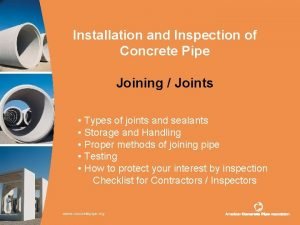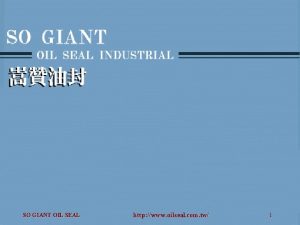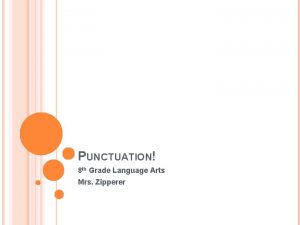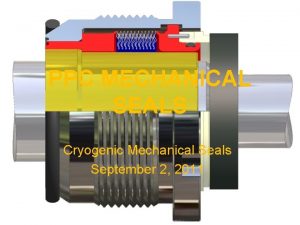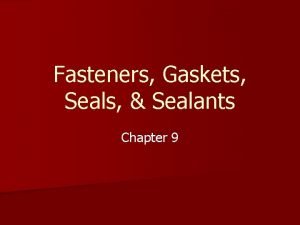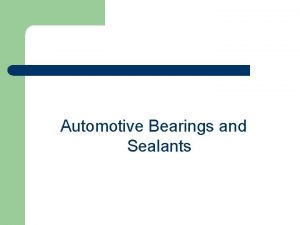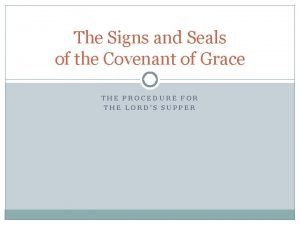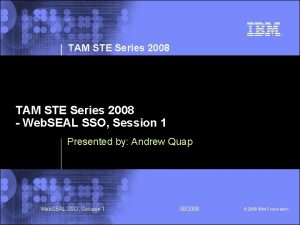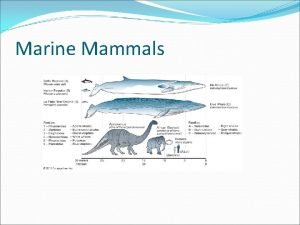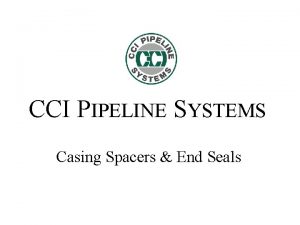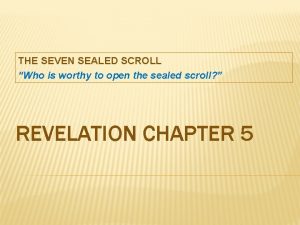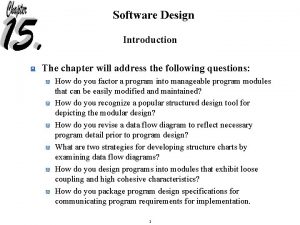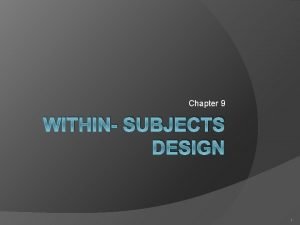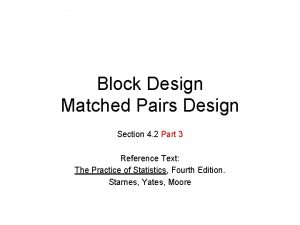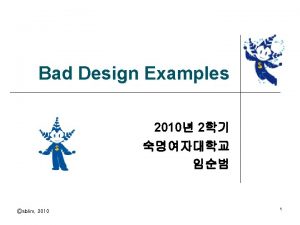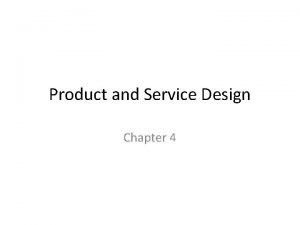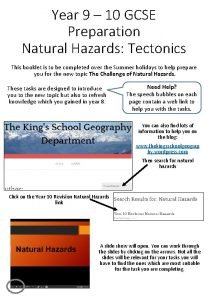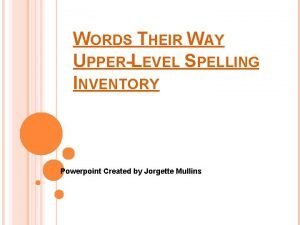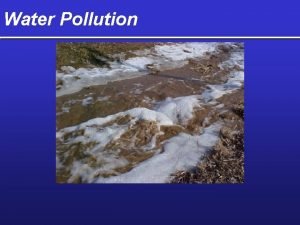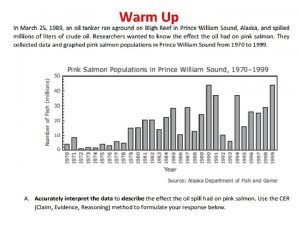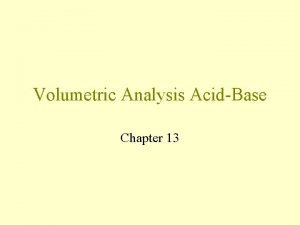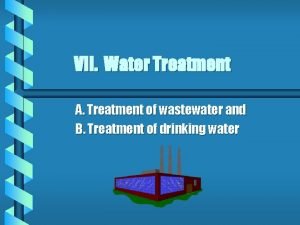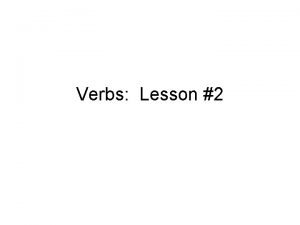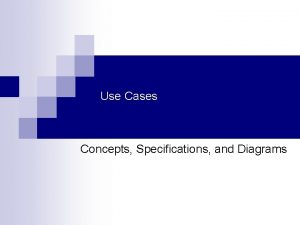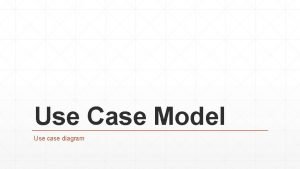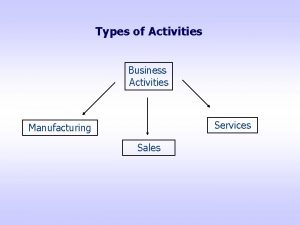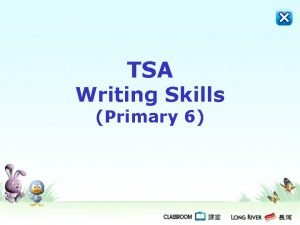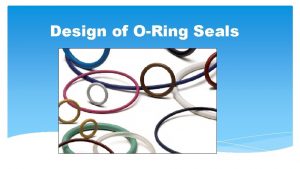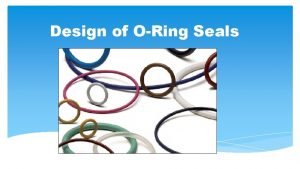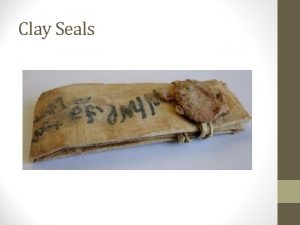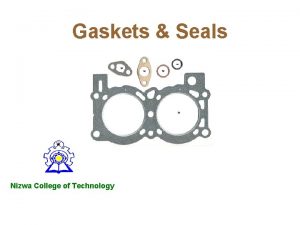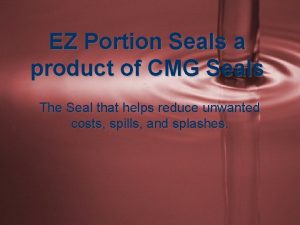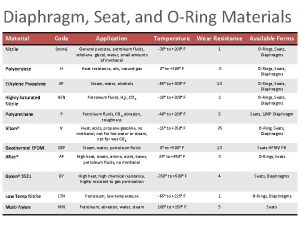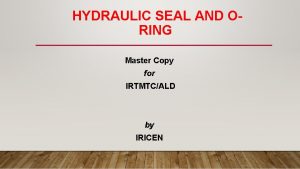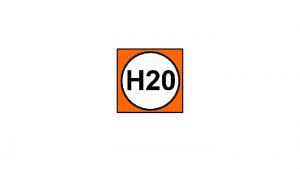Design of Seals Design of ORing Seals Primary
















































































- Slides: 80

Design of Seals

Design of O-Ring Seals Primary Source of information

Why O-Rings? Static and dynamic applications Compact Easy to use Simple design rules Easy to install or remove Easy to service Available in many standard sizes, materials

Why O-Rings? Wide range of operating temperatures Wide range of operating pressures Good durability and abrasion resistance Materials for a wide range of chemicals Deterioration is gradual Inexpensive

Limitations of O-rings Temperature (Typically -40 and 400 degrees F) Rotary speeds ( not to exceeding 1500 feet per minute) For a 2 inch shaft, it is 3000 rpm Vulnerable to sharp edges

O-Rings

Popular O-ring materials Nitrile (Buna-N) Variety of trade names Copolymer of butadiene and acrylonitrile Most widely used and economical elastomer Temperature Range: -40° to +257°F Hardness (Shore A): 40 to 90

Popular O-ring materials Nitrile (Buna-N) Excellent resistance to petroleum-based oils and fuels silicone greases hydraulic fluids water and alcohol High tensile strength High abrasion resistance

Popular O-ring materials Nitrile (Buna-N) Applications Oil resistant applications Low temperature uses Off-road equipment Automotive, marine, aircraft fuel systems




O-Ring Seal Design The O-ring Specifications Size (inside diameter) 1/32 to 26 inches CS (Cross-Section) 1/32 to ¼ inch Rigidity (Hardness) Material

O-ring Standards Standard AS 568 ISO 3601 Example AS 016 -70 N Nitrile O-ring (AS 568 -016 Size 0. 070 CS x 0. 614 ID)

O-ring Search Tools


O-Ring Hardness Measured on Shore-A hardness index Shore 20 A = Rubber Band Shore 40 A = Pencil Eraser Shore 60 A = Car Tire Tread Shore 70 A* = Running Shoe Sole Shore 80 A = Leather Belt Shore 100 A = Shopping Cart Wheel


O-Ring Properties Fluid resistance Hardness Toughness Volume change (swell / shrinkage) Compression set Thermal effects Resilience Deterioration Corrosion Permeability Coefficient of friction Coefficient of thermal expansion Compression set relaxation Tensile strength Elongation Tear resistance / Abrasion resistance

O-ring Seal Design The Gland (Groove + Spacing) Depth of groove Width of groove Diameter of bore and piston Surface finish Tolerances

Static Seals Static Axial Seal (Face Seal)

Static Seals Static Crush Seal

Static Seals Static Radial Seal (Piston Seal)

Dynamic Seals Reciprocating Seals

Dynamic Seals Rotary Seals

Dynamic Seals

General Design Guidelines Stretch should be less than 5% on the O-ring I. D.

Design Guidelines Groove depth must be smaller than the O-ring CS

Design Guidelines O-ring should not completely fill the gland Between 75% and 90% Static seal CS should be compressed from 10% to 40% Dynamic seals should be compressed from 10% to 30%

Design of Axial Seal


Example Design a groove for a 1. 5 inch diameter Internal pressure O-ring : -029 (ID: 1. 489 +/-. 013) (W: . 07 +/-. 003) Material: Buna-N Hardness: 70 Shore-A A: 1. 624 (-0 , +. 005) G: . 125 (-0, +. 01) H: . 049 (-0, +. 005)

Example Design Checking resulting compression Compression (squeeze) = W - H Min. Comp. = 0. 013 in (18. 5%) Max. Comp. = 0. 024 in (34. 3%)

Radial Seal Radial Static Piston Seal

Example Design a groove for a 0. 7 inch diameter piston ring O-ring : -029 (ID: . 614 +/-. 009) (W: . 07 +/-. 003) Material: Buna-N Hardness: 70 Shore-A A: . 746 (-0 , +. 002) B: . 745 (-. 001, + 0) C: . 638 (-. 001, + 0)

Example Design Checking compression Comp = W – 0. 5(A - C) Min. Comp. = 17. 1% Max. Comp. = 26. 0% Also check Extrusion gap Stretch


Radial Static Rod Seal

Static Crush Seal

Static Crush Seal

Dynamic Seals

Reciprocating Motion


Alternatives to O-Rings U-cup Seals O-rings have a tendency to roll and move in reciprocating motions U-cups create more sealing as the pressure increases U-cups require less precision for the associated hardware

Alternatives to O-Rings U-cup Seals

Typical Applications

Buffer Seal Buffer seals are one-way seals that protect rod seals from pressure spikes yet allow fluid (lubricant) to reach the main seal

Rotary Seals

Due to centrifugal force and Gough-Joule effect rotary O-rings are only installed in the housing not on the shaft

Gough-Joule effect When an elastomer is stretched and heated, it will contract.

Rotary O-Ring Limitations O-ring seals are NOT recommended for rotary applications under the following conditions: Pressures exceeding 900 psi Temperatures lower than -40° F or higher than 225° F Surface speeds exceeding 600 feet per minute (fpm). 2300 rpm for 1 inch diameter shaft 1150 rpm for 2 inch diameter shaft

Rotary Seals

Lip Seals Lip seals work well in high speed low pressure rotating shafts

Main Application of Lip Seals Ball and roller bearing protection As little as 0. 002% water in lubrication oil can reduce ball bearing life by 50% Solid particles cause rapid damage to the bearing races.



The purpose of the spring is to provide a uniform load on the lip Also overcomes compression set and wear of the lip material.

There is a tendency for liquids to be pumped from the low angle side towards the high angle side. Underneath the flattened area a thin fluid film is formed. Its thickness must be between 1 and 3 µm to avoid leakage


Primary function is retention Primary function is exclusion



Lip Seals To minimize wear The contact pressure should be as low as possible. Shaft surface should be smooth to 0. 25 - 0. 5 µm. There must be enough fluid to form a hydrodynamic film Fluid pressure must be low (0 -3 psi )

V-Seals

Flexi-Lip Rotary Seals Speeds up to 5000 fps Pressures up to 150 psi Material: PTFE, graphite






Metallic Seals Metallic seals go where polymers cannot High temperatures (Above 400 to 1800 Degree F) Cryogenic temperatures (below − 238 °F) High pressures (3000 psi to 60000 psi) High speeds

Metal Seals

C-Ring and Energized C-Ring

E-Ring and O-Ring

U-Ring and Metal Wire

Labyrinth Seals

Labyrinth Seal

Labyrinth Seal

Mechanical Seals Rotating Elements

 Astm c1103
Astm c1103 Shark and seal organism that is benefited
Shark and seal organism that is benefited So giant oil seal
So giant oil seal Heritage swim club
Heritage swim club Pei easter seals ambassadors
Pei easter seals ambassadors Automotive fasteners gaskets and sealants
Automotive fasteners gaskets and sealants Fips 140-1 security seals
Fips 140-1 security seals Stop clubbing baby seals punctuation
Stop clubbing baby seals punctuation Ppc mechanical seals
Ppc mechanical seals Automotive fasteners gaskets and sealants
Automotive fasteners gaskets and sealants 3 types of sealants used in automotive
3 types of sealants used in automotive Signs and seals of the covenant
Signs and seals of the covenant What are the 7 bowls
What are the 7 bowls Red seals sso
Red seals sso Alan seals weather
Alan seals weather Characteristics of marine mammals
Characteristics of marine mammals Easter seals project action
Easter seals project action Wrap around end seal
Wrap around end seal The first seal
The first seal Seven sealed scroll
Seven sealed scroll Harp seals life cycle
Harp seals life cycle The primary pigments are _____ the primary colors.
The primary pigments are _____ the primary colors. Accented neutral color scheme
Accented neutral color scheme The primary tool used in structured design is a:
The primary tool used in structured design is a: Vcaa visual communication
Vcaa visual communication Explain input and output form design
Explain input and output form design Structural and decorative design in interior design
Structural and decorative design in interior design Classification of decorative design
Classification of decorative design Partial counterbalancing
Partial counterbalancing Process design and control design should always be in
Process design and control design should always be in Between vs within subjects
Between vs within subjects Within group design
Within group design Matched pairs design diagram
Matched pairs design diagram User interface design in system analysis and design
User interface design in system analysis and design Matched pairs experiment
Matched pairs experiment Principles of interior design ppt
Principles of interior design ppt Bad design examples
Bad design examples Anova repeated measures
Anova repeated measures Dialogue design in system analysis and design
Dialogue design in system analysis and design Early american floral design
Early american floral design Delayed differentiation and modular design
Delayed differentiation and modular design Conceptual design vs physical design
Conceptual design vs physical design Design brief define
Design brief define Primary and secondary effects of a tectonic hazard
Primary and secondary effects of a tectonic hazard Yan oi tong tin ka ping secondary school
Yan oi tong tin ka ping secondary school A is a secondary headlines.
A is a secondary headlines. Words their way 3rd grade spelling inventory
Words their way 3rd grade spelling inventory Yiu tupe
Yiu tupe Theme in invictus
Theme in invictus Secondary stakeholders
Secondary stakeholders Vredekloof primary school fees
Vredekloof primary school fees Knowledge harvest ipc
Knowledge harvest ipc Meare village primary school
Meare village primary school Goosehill primary school
Goosehill primary school Poh qinyu principal
Poh qinyu principal Downe manor primary school term dates
Downe manor primary school term dates Complete the table with mahbubs information
Complete the table with mahbubs information Class five science
Class five science Chachua primary school
Chachua primary school Planting more trees
Planting more trees Where can we find rotating arm sprays in sewage treatment?
Where can we find rotating arm sprays in sewage treatment? Tipe penyembuhan luka
Tipe penyembuhan luka Quinary economic activity examples
Quinary economic activity examples Primary sucession
Primary sucession Heather chisholm
Heather chisholm Primary standard
Primary standard Pinotubo
Pinotubo Wastewater treatment process primary secondary tertiary
Wastewater treatment process primary secondary tertiary Lexical auxiliary verbs
Lexical auxiliary verbs Primary objective of it steering committee
Primary objective of it steering committee Lowther higher maths ebook download
Lowther higher maths ebook download Use case primary and secondary actors
Use case primary and secondary actors Use case primary and secondary actors
Use case primary and secondary actors Primary standard solution example
Primary standard solution example Preference for specific design control for procedural bias
Preference for specific design control for procedural bias Business activities types
Business activities types Primary 6 tsa
Primary 6 tsa Incisal labiality
Incisal labiality Symbiotic relationships in the tropical rainforest
Symbiotic relationships in the tropical rainforest Tropical rainforest food web
Tropical rainforest food web Adjuncts to primary survey
Adjuncts to primary survey
